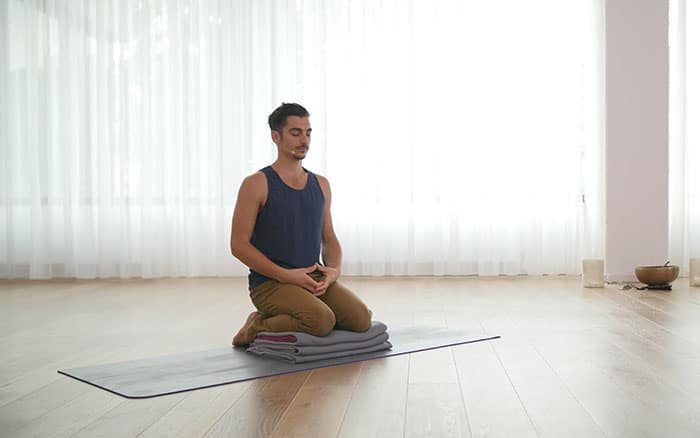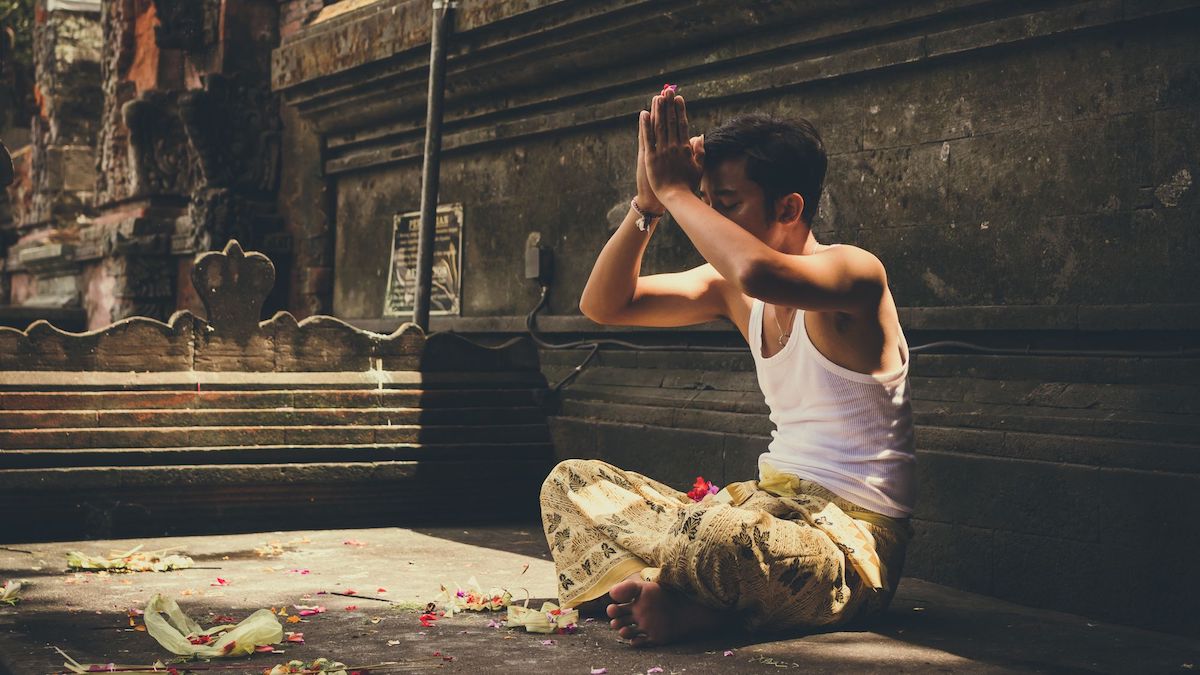‘I am practicing asana, but at a level where the quality is meditative. The totality of being, from core to skin, is experienced. Mind is unruffled, intelligence is awake in heart rather than in head, self is quiescent, and conscious life is in every cell of the body.
That is what I mean when I say asana opens up the whole spectrum of yoga’s possibilities.’ – B.K.S. Iyengar
Die wichtigsten Grundlagen:
The sages of ancient India once recognised the seeming duality of a unified universe; matter and light, body and spirit, heart and mind. Inspired, they evolved postures and meditations that could gently guide others, into a unified moment of body and spirit. They created yoga, as a gift to heal the world, as a way of cultivating gratitude, offering thanks and honoring all creation.
Over the past few decades there’s been a widespread and renewed interest in the benefits of yoga. Thousands of studios now appear in almost all corners of the world.
Fairly often, an emphasis is placed on yoga’s physical aspects – which when practiced, are of course, hugely beneficial. However, this perspective can be limiting to the full, transformative potential of yoga meditation.
If infused with a conscious knowledge and gentle application of its original vast purpose, yoga practice will deepen – eventually allowing one to become an embodied channel of peace.
In the process you will gain focus, clarity and vitality. Reducing stress, yoga meditation heals and strengthens both body and mind.
The good news is that this likely sounds much more challenging than it really is. Simple measures applied with consistency and commitment will encourage mindfulness – naturally and gradually deepening your usual yoga practice into a yoga meditation practice.
The great news is that you can start your journey now, with our Introduction to Meditation video, part of TINT’s Strong and Calm 30-day Yoga and Meditation Challenge.
Enjoy a session of Yoga & Meditation with Matt Giordano.
We’ve also listed some key yoga meditation techniques below.
1. Clear The Space
First and most simply: it is essential that you allow yourself an uninterrupted time for your yoga meditation practice. This means resolutely blocking off a part of your day and removing any distractions that could otherwise interrupt.
This will encourage yoga meditation, as you’re forced to stay with your practice and within the present. To further ensure this, try and practice at the same time daily, forming the habit. Regardless, honor yourself by dedicating some focused time each day, to your own wellbeing.

Commit to your wellbeing in both body and mind. Matt Giordano
2. Set an Intention
Before starting your yoga meditation practice, set an intention. This could be just one word, such as ‘release,’ or ‘heal.’ Make this intention consciously and deeply. In doing so, your practice will unfold from this place, also promoting a heightened sense of mindfulness.
Moving away from a purely physical mindset will serve as reminder for the boundless nature of yoga meditation, which is rather a dance of mind, body and spirit.
“Inhalation is the extension and expansion of the Self.”
3. Follow Your Breath
Breath (prana) is the most fundamental expression of life. Connect with it deeply and allow it to guide the movements of your yoga meditation practice. Use this time alone with your body to observe the natural breath, and how it responds to different postures.
Observe where your breath flows freely and where it feels restricted. As the body relaxes and becomes more receptive, breath will flow more easily. It will also naturally grow steadier and lengthen, as postures start being practiced with more ease.
Through yoga meditation the breath reveals hidden truths about your body; all that’s required is that you listen.

‘The body is like an ocean, rich with hidden treasures. Open its innermost chamber and light its lamp.’ – Mirabai. Photograph by Unsplash.
4. Always Be Kind to Yourself
Avoid letting yoga become colored by notions of even semi-aggressive ‘self- improvement’ goals. Rather, try and approach your yoga meditation with patience, love and gentleness.
As Andrew Harvey notes, ‘the essence of gentleness, is its fusion of yielding and strength, which is the source of its power to harmonize and heal… A body at peace with itself radiates peace.’
If you start to feel physical resistance or pain, use your breath to gently release around it, before slowly moving further into the posture. Avoid forcing yourself into currently unachievable positions.
Approaching your practice with an entirely uncritical outlook will create spaciousness in your practice, through which the mind will gradually empty. A beautiful effect of yoga meditation is that gradually, that subtle flow of self- criticism will fade and be replaced with self-empowerment and fearless authenticity.
5. Choose the Right Practice
Become the alchemist of your own transformation by choosing the practice that you need to bring balance to your present situation. If you need to relax, choose a peaceful flow. If you are looking for an energy boost, pick an active practice. Other times the correlation may be with your emotional state. If you’re feeling apathetic or lost, choose a grounding yoga meditation practice. If you’re stuck obsessing over a problem, an expansive yoga meditation may be beneficial.
“As you are lying on the earth in Savasana, do you not, when the posture is harmonious and balanced, feel both present and formless?”
6. Meet Resistance Skillfully
At some point, everyone will face some mental resistance with his or her yoga meditation practice. You might find yourself conjuring negative thoughts such as, ‘I’m definitely not improving.’ Acknowledge these thoughts as simply thoughts, and without identifying with them, move on. Eventually you’ll recognize that your yoga meditation practice is spacious enough to contain everything – even your resistance. Ironically, it’s only through this acceptance that the negative chatter begins to fade. Find humor in the creative forcefulness of your self- negotiation attempts to do anything other than yoga!
7. Mindfully Close Your Practice
The chaotic state of the world means that usually, easing out of your yoga meditation practice in a slow and gentle way, takes a conscious effort. Take a few moments in your last pose to breath deeply and reexamine your intention. Finally, before closing your yoga meditation: make the conscious decision to allow its balancing effects to suffuse your being. You can carry this with you, for the remainder of your day.
Strong and Calm – 30 Day Yoga & Meditation Challenge
https://watch.tintyoga.com/programs/strong-calm
“From joy all beings have come, by joy they all live, and unto joy they all return.”
References:
Andrew Harvey and Karuna Erickson, Heart Yoga: The Sacred Marriage of Yoga and Mysticism (Berkley: North Atlantic Books, 2010)B.K.S Iyengar, John J. Evans, and Douglas Abrams, Light on Life: The Yoga Journey to Wholeness, Inner Peace, and the Ultimate Freedom (Vancouver: Raincoast Books, 2005)
B.K.S. Iyengar, John J. Evans, and Douglas Abrams, Light on Life: The Yoga Journey to Wholeness, Inner Peace, and the Ultimate Freedom(Vancouver: Raincoast Books, 2005)
B.K.S. Iyengar, John J. Evans, and Douglas Abrams, Light on Life: The Yoga Journey to Wholeness, Inner Peace, and the Ultimate Freedom(Vancouver: Raincoast Books, 2005)
Andrew Harvey and Karuna Erickson, Heart Yoga: The Sacred Marriage of Yoga and Mysticism (Berkley: North Atlantic Books, 2010)
B.K.S. Iyengar, John J. Evans, and Douglas Abrams, Light on Life: The Yoga Journey to Wholeness, Inner Peace, and the Ultimate Freedom (Vancouver: Raincoast Books, 2005)
Andrew Harvey and Karuna Erickson, Heart Yoga: The Sacred Marriage of Yoga and Mysticism (Berkley: North Atlantic Books, 2010)





